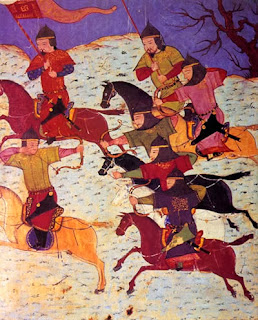Honey is the solution to human health since ancient times. Honey is often referred to as the food of the Gods. Honey has many remarkable properties. One of the properties is a material that can be used to beautify the skin; even honey is also beneficial to free your skin of acne, so it will not interfere with your beauty. Every woman, even men also wants the healthy face and free of acne. Make honey as first solution before you try anti acne.
What are the benefits of honey for skin health and beauty? How to use honey to beautify skin?
 |
| Honey for healthy skin. Image: chickswagger.com |
1. Honey (pure honey) can soften and moisturize normal skin. You can get these properties by applying honey directly on the skin surface (as a mask). Let stand about 30 minutes and then washed with cold water. Perform at least 2 times a week.
2. Honey can be used as a mask for dry skin. Honey is also of great benefit for dry skin. These benefits can you get by mixing honey with ripe bananas. Combine both to the average (if necessary use a blender). Then, wipe the surface of the skin until evenly distributed. Let stand about 30 minutes and wash with cold water. This process can be done at least 2 times a week.
3. Honey can smooth the skin dry feet and cracked. These benefits can you get by mixing 2 cups of warm milk with honey glass (ratio 2: 1) into the basin. Then, put your feet into the basin. Let it stand for 15 minutes while being massaged. These methods can also be used in the treatment of skin on the knees, elbows, hands, or parts of your body that others who want to be gentler.
4. Honey can be made into a natural lotion for daily skin care.Lotion is beneficial in maintaining skin smoothness. The trick is: mix one teaspoon of honey, one teaspoon of grape seed oil, a teaspoon of lemon juice, and three drops of lavender oil. Stir all ingredients until smooth and rub all over the surface of your skin after bathing every morning.
 |
| Notice the characteristics of a good honey before you buy it.Image: nativepakistan.com |
5. Honey can be used as a skin cleanser and facial.This cleanser is to keep your skin by lifting dead skin cells and impurities. These benefits can you get by mixing one tablespoon of honey, one spoon of almond powder, one teaspoon of lemon juice or orange juice, and a few drops of aromatherapy oils. Stir all ingredients until blended and then rubbed across the surface of the skin once every 2 days before bathing.
6. Honey can cleanse the skin, scalp, and hair. This benefits you can get by dissolving in a glass of honey in a water bath. Use this to rinse the bath water body, head, and your hair every bathing.
7. Honey can be made as a skin freshener for normal skin.These benefits can you get by mixing honey with apple cider vinegar (vinegar) with a ratio of 5 (honey): 1 (apple vinegar). The mixture can be rubbed on the skin at least once a week.
8. Honey can be used as eksfolian (cleaning dead skin cells and impurities). These benefits can you get by mixing one tablespoon of honey in 2 tablespoons of oatmeal cereal. This mixture can be rubbed into the surface of the skin at least once a week.
9. Honey can be used as an acne medication, and even can be used as a stain remover acne scars. These benefits can you get by mixing a spoonful of honey with a little cinnamon powder. Then, apply this mixture on the acne or acne blemishes. Leave it overnight and wash off in the morning. Do this over and over again for at least one week.
 |
| Honey at spa center. Image: termemerano.it |
10. Honey at spa. Honey is also used for beauty treatments in the spa center. Maybe you need to enjoy a healthy and spa as well as beautify your body at the spa center
Additional Information: Honey contains many anti-oxidants, various benefits of vitamins, nutrients and enzymes, which on the whole is very beneficial to your health.
Honey is also believed to be beneficial to increase sexual desire, both for men and women, so that your sex life will be warm and enjoyable. Honey is a natural aphrodisiac.
Let us drink honey with the right dose, so we can get the benefits of honey for the health and life more beautiful.
Important information: Before you buy honey, make sure you buy honey with high quality. Do not be tempted by cheap prices and attractive packaging. Buy pure honey or honey that is produced by a company that already has a good reputation.
Great news.
If you do not have time to prepare all the tips and solutions, as mentioned above, so now you can get health and beauty products for you, you can even get a lifestyle rewards for free as a holiday and enjoy a cruise to places of interest and beautiful, which will surely provide fond memories for you. Please click:
Find out more.















